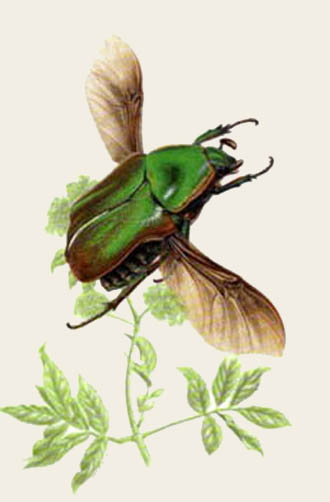 |
|
| |
The
superfamily Scarabaeoidea is one of the largest and most diverse
superfamilies of Coleoptera, including over 31,000 described species.
Current estimates suggest that the Scarabaeoidea includes at least
50,000 species worldwide; therefore, only 62% of all scarab species
have been described. Based on the current rate of description, and
because of the recent decline in scarab systematists, it will take
over 150 years to describe the scarab fauna of the planet. This
project extends the goals of our previous NSF-PEET support (1997-2002)
by creating keys and databases to ALL genera of New World scarab
beetles (approximately 600), and it builds on our existing foundation
in scarab systematics to monograph poorly known groups of New World
scarab beetles and train students in scarab systematics.
Scarab beetles are prominent members of the entomofauna and are
important biocontrol agents, agricultural pests, and habitat indicators.
Despite the economic importance, diversity, and ecological significance
of scarab beetles, less than 50% of the New World genera can be
identified with reliablity. The New World tropics contains the greatest
diversity of scarab species, yet it is the poorest known taxonomically.
Thus, we have targeted scarab groups from this region for training
in monography, phylogeny, and bioinformatics. Study of extensive
museum holdings will be supplemented with field expeditions to regions
where diversity is poorly represented in museum collections and
where target taxa are distributed. Morphological and molecular characters
will be integrated as part of monographic and phylogenetic analyses
with attention to synthesizing information from the literature and
resolving nomenclatural problems at all taxonomic levels.
The proposed research will create comprehensive catalogs and electronic
databases of specimen-level information, including character data,
geographic and temporal distributions, host plant associations,
and images. It will produce monographs, an identification guide
to genera of New World scarabs, and a database of New World genera
of scarabs that are retrievable electronically. Phylogenetic research
will stabilize the higher-level classification of the Scarabaeoidea
by targeting enigmatic and long-neglected groups. The research will
contribute to the development of computer infrastructure for organizing
and accessing knowledge about scarab beetles, and it will provide
the foundation for future work in scarab systematics.
Systematics is the prime source of discoveries and new ideas in
biology. Implementation of this proposal will help to train a new
generation of systematists as well as advance our
taxonomic knowledge of a prominent but poorly known superfamily
of insects. The taxonomic monographs published as a result of the
research will help to strengthen the foundation for all fields of
biology.
. |

